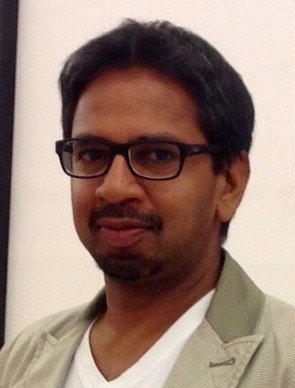Riason Naidoo

In 2021, 50 contemporary art curators, researchers, and museum professionals from 32 different countries were awarded support to attend the CIMAM 2021 Annual Conference, in-person and online.
For the first time, and thanks to the generous support of The Getty Foundation who sponsored the virtual platform, 27 grantees attended the conference online, while 23 attended onsite.
Launched in 2005, CIMAM’s Travel Grant Program is designed to foster cooperation and cultural exchange between contemporary art curators and museum directors in emerging and developing economies and their counterparts in other regions of the world.
This grant was generously funded by Mercedes Vilardell.
Riason Naidoo's Conference Report
It was my first time in Eastern Europe when I arrived at Warsaw Chopin airport on Thursday, 4 November for this year’s CIMAM conference. I had previously attended the conference in Rio de Janeiro in 2013 and Singapore in 2017 so I was familiar with the intensity of the programme as well as the rewards of bonding with a group of art museum professionals and local hosts over a few days.
This time was different though because the organizers were making us work: three cities in three days: Warsaw, Lodz, Gdansk. We had to make our own arrangements to get to the city of Lodz, some 130km away from Warsaw, which added some anxiety but also a sense of adventure.
The CIMAM conference is always memorable for its presentations, its opportunity to make new contacts and reacquaint with colleagues, and for its tours to the city’s art museums and spaces.
It was truly a delight to hear Dipesh Chakrabarty open the conference proceedings with a deep philosophical interpretation of the complex politics of climate change delivered in simple terms. T. J. Demos’s presentation on the relations between contemporary global activist movements and socially engaged art following the Black Lives Matter movement in the United States in 2013 and the Fees Must Fall protests in South Africa in 2015 was informative and engaging. Otobong Nkanga’s highly original practice was inspiring.
We visited the Sztuki museum in Lodz—one of the world’s first museums of modern art—that had some gems such as ‘Real’ (2006) by Robert Maciejuk, the pop art photo composition ‘Consumer Art’ (1972-74) by Natalia LL and the poster ‘We are the Revolution’ (1971) by Joseph Beuys. I was pleasantly surprised to discover ‘Last year in Antananarivo’ (2016)—an artwork drawing on photo archives—by Joël Andrianomearisoa from Madagascar/ France, which gave a hint of the diversity of the collection.
The Wilhelm Sasnal exhibition, curated by Adam Szymczyk, at the Polin Museum of the History of Polish Jews in Warsaw, while celebrating painting, was another grim reminder of Germany’s annexation of Poland and its persecution of Jews. Russia’s intervention in the country and victory over Germany during World War II—recalled in the socialist realist painting ‘January, 1945’ (1949) by Wojciech Fangor at the Sztuki museum—was followed by a lengthy period of communism, seen as another form of annexation, that involved Poland in Cold War politics. Joseph Stalin’s gift to Poland—the Palace of Culture and Science that has dominated the Warsaw skyline since 1955—is an ambiguous symbol of the USSR’s victory on the one hand and its authority over Poland ever since. In more recent times there have been calls to demolish the building because of these associations. Poland’s economic policies have shifted westward since 1989 that has seen dramatic growth in its art market, while its museums push for more independence from state interference. I suspect that the conference was held in Poland this year to highlight this concern.
I was advised by local curators to opt for the Edward Krasiński studio visit in Warsaw and I was not disappointed. Krasiński and his close friend Henryk Stazewski were important protagonists in the Polish art scene in the 1960s and 70s and helped found the Foksal Gallery in Warsaw, which we also had the pleasure to visit. Krasiński was known for his irony, often working in an ephemeral way. His trademark was a blue scotch tape at the height of 130cm. “I don't know if this is art. I know that it's a blue Scotch tape, width 19mm, length unknown,” he is quoted as saying. It was a pleasant surprise to discover that the studio windows were painted by celebrated French artist Daniel Buren, a close friend of the two artists, who often visited them from Paris.
I took the opportunity to extend my stay in Warsaw for a few days and visited the Museum of Warsaw in Old Town, which is a very well-curated permanent exhibition narrating the history of the city via art and objects. My host Ula Kropiwiec—who translated Frantz Fanon’s classic text ‘Black Skin, White Masks’ and Achille Mbembe’s ‘Necropolitics/ Politics of Enmity’ into Polish—also introduced me to some local spots that included lunch at Pyzy Flaki Gorące, situated across the Vistula River, accompanied with local vodka, which is not to be missed.